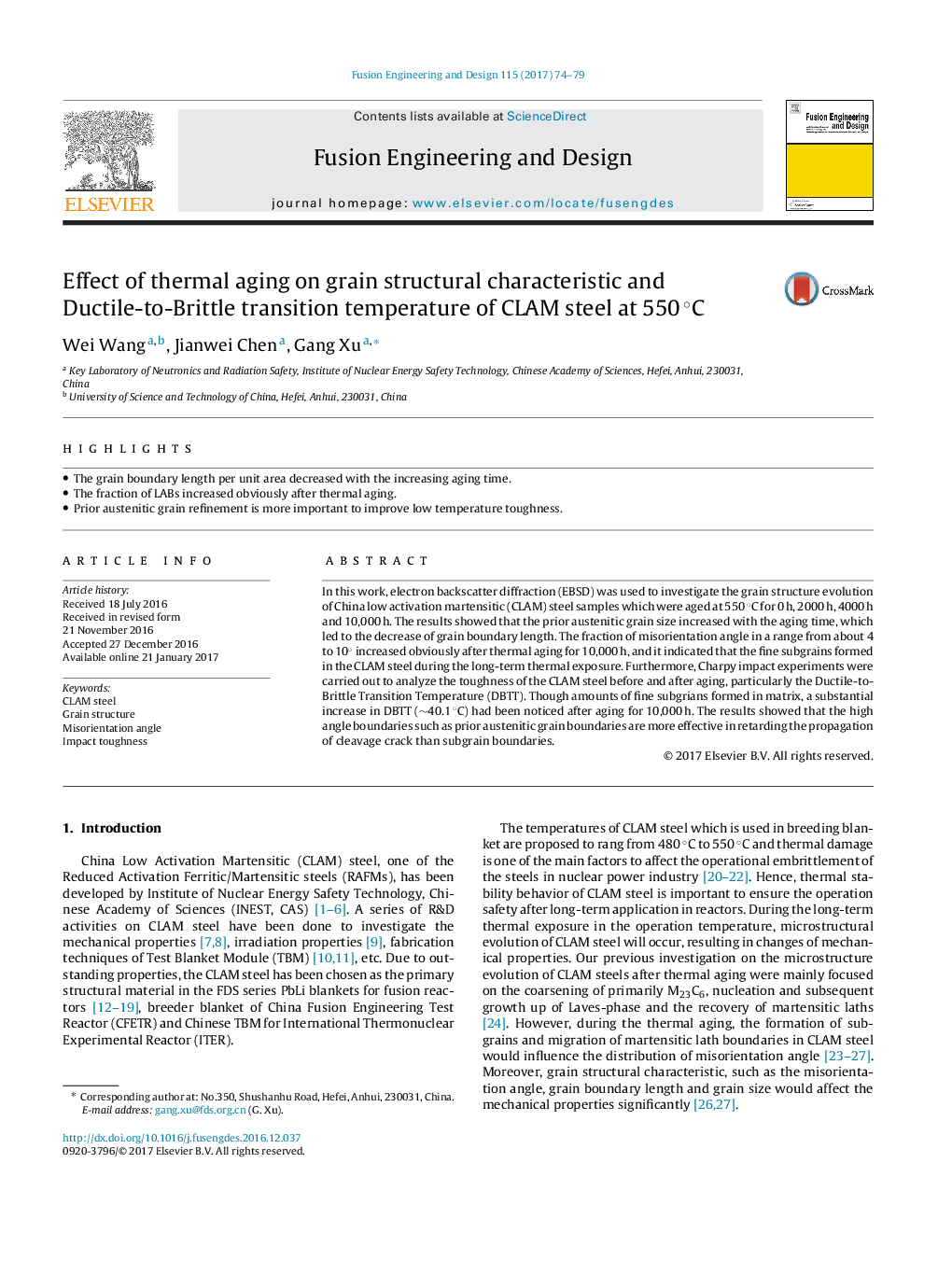| Article ID | Journal | Published Year | Pages | File Type |
|---|---|---|---|---|
| 4921247 | Fusion Engineering and Design | 2017 | 6 Pages |
Abstract
In this work, electron backscatter diffraction (EBSD) was used to investigate the grain structure evolution of China low activation martensitic (CLAM) steel samples which were aged at 550 °C for 0 h, 2000 h, 4000 h and 10,000 h. The results showed that the prior austenitic grain size increased with the aging time, which led to the decrease of grain boundary length. The fraction of misorientation angle in a range from about 4 to 10° increased obviously after thermal aging for 10,000 h, and it indicated that the fine subgrains formed in the CLAM steel during the long-term thermal exposure. Furthermore, Charpy impact experiments were carried out to analyze the toughness of the CLAM steel before and after aging, particularly the Ductile-to-Brittle Transition Temperature (DBTT). Though amounts of fine subgrians formed in matrix, a substantial increase in DBTT (â¼40.1 °C) had been noticed after aging for 10,000 h. The results showed that the high angle boundaries such as prior austenitic grain boundaries are more effective in retarding the propagation of cleavage crack than subgrain boundaries.
Related Topics
Physical Sciences and Engineering
Energy
Energy Engineering and Power Technology
Authors
Wei Wang, Jianwei Chen, Gang Xu,
